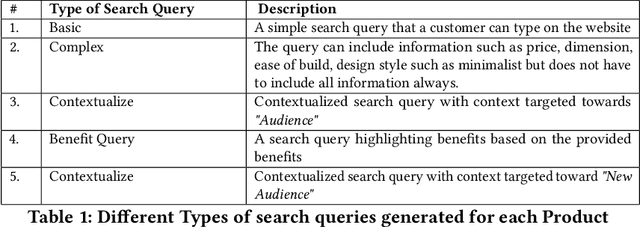Giorgi Kokaia
Learn by Selling: Equipping Large Language Models with Product Knowledge for Context-Driven Recommendations
Jul 30, 2024



Abstract:The rapid evolution of large language models (LLMs) has opened up new possibilities for applications such as context-driven product recommendations. However, the effectiveness of these models in this context is heavily reliant on their comprehensive understanding of the product inventory. This paper presents a novel approach to equipping LLMs with product knowledge by training them to respond contextually to synthetic search queries that include product IDs. We delve into an extensive analysis of this method, evaluating its effectiveness, outlining its benefits, and highlighting its constraints. The paper also discusses the potential improvements and future directions for this approach, providing a comprehensive understanding of the role of LLMs in product recommendations.
Writing your own book: A method for going from closed to open book QA to improve robustness and performance of smaller LLMs
May 18, 2023Abstract:We introduce two novel methods, Tree-Search and Self-contextualizing QA, designed to enhance the performance of large language models (LLMs) in question-answering tasks. Tree-Search is a sampling technique specifically created to extract diverse information from an LLM for a given prompt. Self-contextualizing QA leverages Tree-Search to enable the model to create its own context using a wide range of information relevant to the prompt, evaluate it explicitly and return a open book answer to the initial prompt . We demonstrate that the quality of generated answers improves according to various metrics, including accuracy, informativeness, coherence, and consistency, as evaluated by GPT3.5(text-davinci-003). Furthermore, we show that our methods result in increased robustness and that performance is positively correlated with tree size, benefiting both answer quality and robustness. Finally, we discuss other promising applications of Tree-Search, highlighting its potential to enhance a broad range of tasks beyond question-answering. \noindent We also discuss several areas for future work, including refining the Tree-Search and Self-Contextualizing QA methods, improving the coherence of the generated context, and investigating the impact of bootstrapping on model robustness
 Add to Chrome
Add to Chrome Add to Firefox
Add to Firefox Add to Edge
Add to Edge